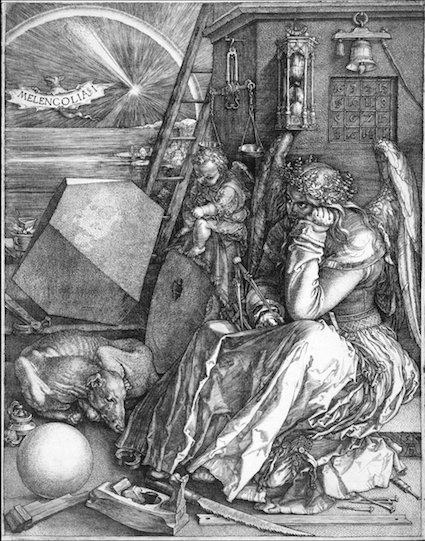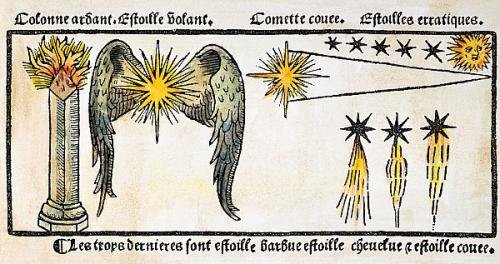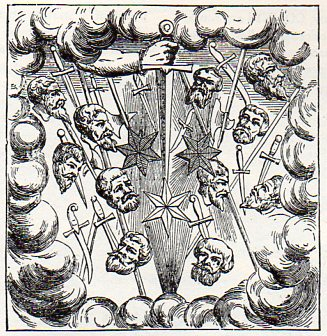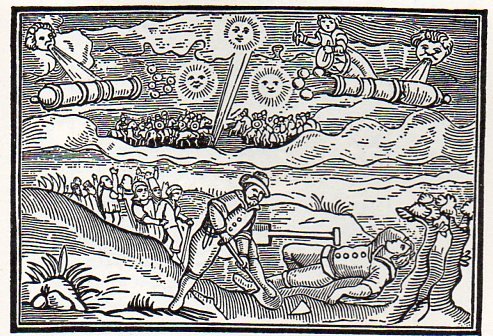Comets and meteors as seen by people of old
People watched the skies long before Hubble telescope (or any telescope, for that matter) was invented. Naturally, they noticed objects moving across the skies on great speed and tried to find some explanation for what they’ve seen.
For example, Aristotle was convinced that the skies were a place of absolute harmony and perfect order, so comets, as quite an unpredictable and sudden phenomenon, couldn’t be a part of it. He thought that comets were really a result of air combustion that happened due to certain unevenness of air.
Other philosophers disagreed, though. Pythagoreans thought that comets were moving planets. Hippocrates of Chios suggested that comets got their tales only after years and years of roaming in space. Seneca, on the other hand, thought that comets moved in elliptical orbit and one can see them only when they reach the lowest point in that orbit.
In fact, ancient Greek and Roman philosophers remained the only people in Western culture who were interested in describing comets and meteorites as natural phenomenon for quite a while. Those who were before them, and those who came after, saw comets and other celestial bodies as mystical objects — sent by gods to let people know of their will or to predict all kinds of important or ominous events. There were certainly plenty of events of the latter kind to connect with the comets or rocks falling from the skies. For example, innocent comets that just happened to travel across the skies at the wrong time, were accused of predicting (or heralding) deaths of Julius Ceasar, Constantine the Great, Ivan the Terrible and Pope Urban IV — to name a few.
No wonder medieval folk, poor or rich, was all struck by awe and fear every time they saw a comet in the sky.
Comets are actually represented in quite a substantial amount of medieval imagery — from paintings and tapestries to murals and etching.
Some artists of medieval era did their best to create quite precise images


Others showed much more imagination and creativity

Look at all these swords and severed heads — the author did try to make it clear those comets are not a good sign:

And here meteorites are shown as cannonballs coming from canons of heaven:

Here’s an example of one of the earliest images of a comet. It’s a fragment of the Bayeux tapestry made in England not long after Norman conquest. Here you can see a Halley comet above the head of the king Harold II. I imagine the comet that appeared in the sky only 4 months after his coronation gave the king lots of sleepless nights. You can even see the people pointing at it saying that their king is probably a goner.

But in 16th century science has finally decided to find some serious approach to studying comets. Some astronomers and observers, like Tycho Brahe and others, came to understanding that comets are not an atmospheric effect or a God’s hand and actually travel far outside our atmosphere, and even further than the Moon itself! The end of 17th century brought ideas of famous scientists like Edmond Halley and Isaac Newton. And that’s when comets stopped being a mystery and became subjects of scientific study.
Congratulations @annielee! You have received a personal award!
Click on the badge to view your own Board of Honor on SteemitBoard.
Congratulations @annielee! You have received a personal award!
Click on the badge to view your Board of Honor.
Do not miss the last post from @steemitboard:
Congratulations @annielee! You received a personal award!
You can view your badges on your Steem Board and compare to others on the Steem Ranking
Vote for @Steemitboard as a witness to get one more award and increased upvotes!